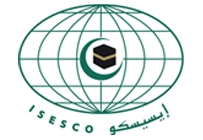Invited Speakers
We are pleased that a number of prominent and knowledgeable speakers have agreed to give plenary talks at MGEF-13.
The speakers and the titles of their talks are shown below.
Prof Yasser Gaber Dessouky
College of Engineering and Technology, Arab Academy for Science and Technology and Maritime Transport, EgyptRenewable Energy and Energy Efficiency Policies
More details ...
Prof Anne Håkansson
KTH The Royal Institute of Technology, SwedenEnvironmental Impact Assessment - Assess for Sustainability
More details ...
Dr Anders Hellman
Chalmers University of Technology, SwedenHematite, a promising photoelectrochemical material
More details ...
Dr John R Littlewood
Cardiff Metropoltian University, UKTo be or not to be that is the question for quantitative and/or qualitative holistic building performance assessment
More details ...
Prof Nacer Kouider M'Sirdi
Laboratoire des Sciences del'Information et des Systèmes, FranceDifferent Models of HRES that can be used locally in mediterranean cities: A research point of vue
More details ...
Dr Catalina Spataru
University College London, UKRenewable Energy and Electricity Grid: WITH or WITHOUT fear of blackouts?
More details ...
Prof Fernando Tadeo
University of Valladolid, SpainOsmotic Energy: a promising renewable energy source
More details ...
Prof Anastasia Zabaniotou
University of Thessaloniki, GreeceBiomass Thermochemical Technologies and Biorefineries
More details ...
Other speaker's details to follow ...
Prof Yasser Gaber Dessouky
College of Engineering and Technology, Arab Academy for Science and Technology and Maritime Transport, EgyptRenewable Energy and Energy Efficiency Policies
Abstract:
A major transition of the energy sector is needed if the global issues of energy security, energy access, sustainable development and climate change are all to be adequately addressed this century. Whereas many of the policy initiatives and negotiations relating to energy and climate change are being undertaken at the national and international levels, in parallel many leading cities and towns are taking their own decisions concerning their energy destiny - and their actions are beginning to have an impact. Their collective voice is starting to be heard at the most recent climate talks which are aiming to reach a new framework agreement.
This keynote presents an overview of renewable energy resources and technologies and identifies and describes successful case studies. It will examine the potential for the greater deployment of renewable technologies in built-up environments, including implications for supporting policy development. It evaluates successful policies in selected towns and cities that have enabled the cost-effective deployment of renewable energy (including by investing in "green" electricity projects and purchases, distributed heat and power generation and transport biofuels). These initiatives are often developed in association with national policies and in accordance with supportive energy efficiency measures.
This keynote includes methods of identifying local renewable energy resources, overcoming barriers to implementation, and a review of state-of-the-art technologies. Technologies evaluated include district heating and cooling; combined heat and power from biomass and geothermal sources; distributed generation mainly from solar, wind, geothermal and biomass; smart metering; intelligent networks; and biofuel production. The focus is on technologies and policies that will enable the cost-effective deployment of renewable energy heat, power and transport fuel use in cities, towns and also island communities.
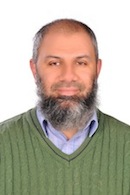
Biography:
Yasser Gaber A. Dessouky is Currently a professor in the Electrical and Control Engineering, in the Arab Academy for Science, Technology and Maritime Transport (AASTMT) since 2006. He got his Ph.D. from Heriot-Watt University, UK in July 1998. He was the Vice Dean for International Affairs from August 2008 to Jan. 2011, and the Program Chair, Electrical & Control Eng. Department from Feb. 2011 to Sept. 2012. He is the AASTMT focal point to the Ministry of Scientific Research, RDIN. He is a Senior Member in IEEE and Member in IET, the Chair of Industry Relations Subcommittee, IEEE Alexandria and the representative, BEIE/IET Alexandria Subsection. He is Member of the board of Reseau Mediterraneen des Ecoles d'Ingenieurs (RMEI), France. Professor Dessouky is an Editorial board member for many Journals and a consultant with the two Industrial Companies, Alexandria. He is a leading and working in many Scientific Research projects. He has a patent from the Patent Office in UK. He supervised many MSc and PhD projects and Peer Reviewed in many international journals, Transactions and Conferences. He has more than 45 papers in international conferences and journals.
Prof Anne Håkansson
KTH The Royal Institute of Technology, SwedenEnvironmental Impact Assessment - Assess for Sustainability
Abstract:
Environmental Impact Assessment (EIA) method assesses the implications of construction, such as, a building, dam site and hydropower development and river regulation, road or motorway, or an airport, will have on surrounding environment. The implications include the effects on the nature, natural resources, as well as, society and economics.
One of the benefits of the EIA method is the growing awareness of and concern with environmental issues at all levels of society. The impacts on society, the social impact assessment (SIA) reviews the social effects caused by the constructions, like infrastructure, agriculture and other projects [1].
Society increasingly recognises the need to incorporate environmental considerations into economic development. Here, the economic development refers to sustained and concerted actions of policymakers and communities promoting critical infrastructure, environmental sustainability and standard of living and economic health.
Adopting social impact assessment as a part of the environmental impact assessment in formal planning systems and including economic development give a unique assessment combination that promotes sustainability.
The EIA method ensures that the implications are considered before making any decisions about building the constructions. These judgements, often based on social and economic criteria, reflect the political reality of impact assessment in which significance is translated into public acceptance and desirability.
An applied EIA method facilitates the integration of environmental factors into the development process and generates alternatives that minimise the wasteful use of natural resources and reduce the impact on the environment [2]. Furthermore, EIA is centred on the effects of human activities and involves society making value judgements concerning the significance and importance of these effects.
Hence, EIA method is a sequential set of activities designed to identify and predict the consequences an action has on the bio-geophysical environment and on man's health and well-being. It is also designed to interpret and communicate the information about the consequences. The set of activities and the consequences can be provided and pinpointed via knowledge-based systems [3].
In this talk, the technology for sequential set of activities of EIA is the focus. The computer systems can support and give tools to carry out the set of activities to achieve the best and most sustainable solution for the environment and the construction to be built. It makes use of large data sets and satellite images to provide data, information and knowledge about the area that will be affected by the construction. With this information at hand, the evaluations of the impacts are more valid, which makes the decision sustainable.
References
- Strömquist, L., (1994) Environmental Impact Assessment of the La Sirena hydropower project, Nicaragua. Feasibility study. Instituto Nicaraguense de Energia/Norconsult International/ SwedPower. 75 pp
- Strömquist, L. and Tatham, E., 1992, A practical approach to environmental impact assessment in developing countries. In Strömquist, L. (ed) Environment, Development, and Environmental Impact Assessment: Notes on Applied Research. Reprocentralen HSC, Uppsala University, Uppsala, ISSN 0375-8109, ISBN 91-506-0910-6, UNGI Rapport nr 82.
- Håkansson, A., 2004. An Expert System for the Environment Impact Assessment Method. Research Report 2004:1. Department of Information Science, Division of Computer Science, University of Uppsala, Sweden, 2004. ISSN 1403-7572.
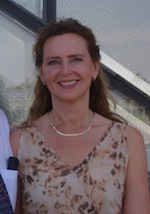
Biography:
Anne Håkansson is an Associate Professor in computer science at KTH The Royal Institute of Technology, Stockholm, Sweden. In 2004, she received a PhD in Computer Science at Uppsala University, Uppsala, Sweden and her research has focused on intelligent systems and knowledge based systems for different application areas, such as, environmental impact assessment, large data sets and context. For her work through the years, 2012 she received a KES Award for outstanding contributions to the activities and status of the KES organisation and become an ambassador for Uppsala, Sweden, 2009.
1993, Associate Professor Håkansson participated in developing computer systems for assessing environmental impacts at dam sites and hydropower projects for developing countries in tropical climate. Moreover, she has arranged conferences including, SEB'12 Sustainability in Energy and Buildings, Stockholm, Sweden and is the editor of IJSEB, International Journal of Sustainability in Energy and Buildings.
Dr Anders Hellman
Chalmers University of Technology, SwedenHematite, a promising photoelectrochemical material
Abstract:
In the novel "L île mystérieuse" Jules Vernes writes "water will be the coal of the future". This is the passing conclusion of the main characters after a lengthy discussion on whether the known coal reserves of that time would be depleted within the near future. The discussion in the novel is still very relevant. Although Vernes will never be right about water being used as fuel (thermodynamics considerations), water still is a key element in the envisioned future hydrogen-based energy infrastructure. With enough supply of energy, water can be separated into its elementary components, hydrogen and oxygen, in which hydrogen for example; can be used as fuel in a fuel cell.
Absorption of sunlight can be coupled directly to electrochemical processes in photoelectrocatalytic devices that produce fuel directly. However, there are a number of processes that are important for the concept; the first is the actual capture of photons, the second is the creation of electron-hole pairs that should be separated. The separated electron-hole pair then needs to be transported to a site, preferable catalytically active, on which the transformation to chemical energy can occur. In order to find new and improved catalysts for the photoinduced water oxidation reaction it is necessary to have an atomistic understanding of the underlying multifarious physicochemical phenomena [1]. Recently developed modeling methodology provides first-principles insights into the thermodynamics of photoelectrochemical reaction energetics [2].
I will show what can be addressed using this methodology, and I will use recent results for water oxidation on hematite [3] as case study. For instance, under steady state photoelectrochemical reaction condition, the presence of the photogenerated hole at the VBE will destabilize many surface terminations and only O3-Fe-O3-R and O3-R are stable. Further, water oxidation is thermodynamically feasible only on (HO)3-Fe-H3O3-R, (HO)3-Fe-O3-R, O3-Fe-O3-R terminations. Thus, the modeling studies suggests that if (HO)3-Fe-H3O3-R is present in the system, it will be converted to O3-Fe-O3-R at steady state illumination, and over this termination, photoinduced water splitting is allowed thermodynamically.
However, although the water oxidation reaction is allowed on hematite, there are some problematic properties that prohibit us to utilize hematite in photoelectrochemical devices. Two important ones are the weak photoabsorption and the short diffusion length of the generated electron-hole pairs. I will also discuss recent development [4] in the use of metal nanoparticles (MNP) that interact strongly with light (plasmon active particles). Combining hematite with MNP results in improvement of the photoabsorption properties of hematite as well as the real-space position where the necessary electron-hole pairs are created.
To conclude, the there are some promising developments in the use of hematite as the photoanode material in photoelectrochemical devices.
References
1. Grätzel, M. Nature 414, 338 (2001).
2. Valdes, A et al., J. Phys. Chem. C. 112, 9872 (2008)
3. Hellman, A et al., J. Phys. Chem. C 115, 12901 (2011)
4. Iandolo, B et al, submitted
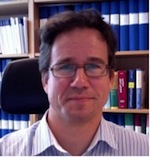
Biography:
Anders Hellman received his PhD in theoretical physics in 2003 from University of Gothenburg, Sweden. Since then he has worked on various topics related to surface science, heterogeneous catalysis and materials for energy harvesting. He works as associate professor at Chalmers University of technology, Sweden, and is also associated with the Competence Centre for Catalysis, Sweden. His research interests range from automotive catalysis to plasmon-assisted water oxidation. His research portfolio includes charge transfer and non-adiabaticity in surface reaction, ammonia synthesis, CO and methane oxidation, thin oxides supported on metals, and photoelectrochemical studies of water oxidation.
Dr John R Littlewood
Cardiff Metropoltian University, UKTo be or not to be that is the question for quantitative and/or qualitative holistic building performance assessment
Abstract:
There has been a rise in post occupancy evaluation (POE) of buildings in the UK since 2010, following numerous EU and UK research council grants and also the UK Technology Strategy Board's Building Performance Evaluation (BPE) scheme. The TSB BPE initiative has seen hundreds of domestic and non domestic buildings, their design teams and occupants assessed and monitored; using both quantitative and qualitative methodologies and finishes in 2014. One of the outcomes of these various initiatives funding schemes is a call for a 'light touch yet holistic' BPE methodology, which can be adapted to both new low and carbon neutral buildings and existing buildings being retrofitted with energy saving measures.
Research undertaken by Dr Littlewood on a number of BPE projects involving in-construction testing (iCT) using thermography (iCT:Th) during the construction process and the POE of low carbon dwellings led to the creation of the invited session 'assessment and monitoring the environmental performance of buildings' (AMEPB) at SEB'11 and the further enhancement at SEB'12. This presentation gives an overview of the dilemma on occasions facing researchers, practioners and scientists "To be or not to be that is the question for quantitative or qualitative holistic building performance assessment" and what this really means in practice, particularly using science and technology to deliver sustainable buildings. Hence the expansion of the AMEPB invited session into the Sustainable Building: Science and Technology general track launched at SEB'13.

Biography:
John has studied, practised and lectured in the built environment since 1986 in both craft and professional roles, with a particular focus on sustainable housing, assessing and monitoring the thermal performance and occupant attitudes of and in dwellings, and also architectural technology. His PhD was entitled 'A study of the design and thermal performance of two-storey earth sheltered houses for the UK climate', which he completed in 2001. He is currently managing numerous EU & UK industry funded applied research projects developing methodologies for assessing environmental performance during and post construction of new and existing dwellings and also investigating end user energy demand and use and behaviour. Furthermore, he has been practising as a sustainability consultant and building performance evaluator with a number of housing associations since 2007. He co-foundered and has led the Ecological Built Environment Research & Enterprise group (EBERE) and also the Professional Doctorate: Ecological Building Practices (DEBP) since 2009 at Cardiff Metropolitan University. He is supervising six DEBP students from the UK, South Africa and Canada. He is also supervising five PhD students from the UK, Abu Dhabi, Kuwait and Iran; having already supervised to completion two PhD projects and examined three PhDs and one MPhil research project.
John is always interested in developing collaborative projects with higher education organisations and industry and will be happy to be back in Morocco after 11 years; when he trekked to the top of Jebel Toubkal, in the Atlas Mountains in April 2002.
Prof Nacer Kouider M'Sirdi
Laboratoire des Sciences del'Information et des Systèmes, FranceDifferent Models of HRES that can be used locally in mediterranean cities: A research point of vue
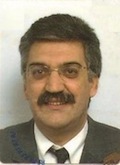
Biography:
M'Sirdi Kouider Nacer is professor at Polytech Marseille and Aix Marseille University (AMU). He got the Phd in Electronics at INPG Grenoble (1983) and the Doctorat d'Etat in adaptive signal processing for non-stationary signals at the INPG, Grenoble, in 1988 (Laboratory of Automatic of Grenoble). He was assistant professor, in signal processing and automatic control, in University of Paris 6 in 1987 and Professor at University of Versailles in 1993 where he created a master specialised in Mechatronic of Robotic Systems (Option MSR in the DEA of Robotics). His research was done in the Laboratory of Robotics of Paris.
He was the dean of the research Laboratory of Robotics of Versailles (the LRV that he has created in 2000), from 2000 to 2004. From 2005 up to now, he is a research member of the LSIS (UMR CNRS 7296). His main research activities deal with adaptive and robust control, signal processing, diagnosis and observation for complex systems such as vehicles and robots.
In 2009 he has created the VSAS research project on Variable Structure Automatic Systems (SASV), for fundamental research in automatic control and optimization of Variable Structure Systems with commutations. The considered class of systems (VSAS) is multi components (using multiple connected models with commutations) involving exchanges between several parts of the system and the environment. This the case in one of vehicules and mobile systems application and also the case of Systems with Multiple Renewable Energy Sources. Applications of his research activities deal in one hand on vehicles and autonomous robots applications and in another hand on MACSyME project (Modeling Analysis and Control of Systems with Multiple Energy sources). Recently he has proposed to create the MERIE group (Mediterranean Efficient and Renewable Intelligent Energies) in the RMEI network. The aim of this group is to promote compatible and efficient renewable energies in merditerranean countries.
Dr Catalina Spataru
University College London, UKRenewable Energy and Electricity Grid: WITH or WITHOUT fear of blackouts?
Abstract:
The renewable energy use is increasing and in the future we will be looking at a completely different power grid. Sources such as solar and wind provide power intermittently and have actually made the system more delicate. In addition, more people will be driving electrical cars, energy which needs to be delivered by the power grid. We need a better understanding of power grid that can cope with intermittent conditions and find new ways to stabilize the power grid. Unfortunately, across the world, in many countries not enough has been done to address this problem. In the future, this could create more disruptions and potential for more frequent blackouts. If we look at US, electric supplies have usually been fairly efficient. However, when it comes to outages, the essential issue is whether we can get connected to the grid and whether you can island from the grid, in other words what it is linked with and not the type of power we use. Therefore, the main challenge to prevent such blackouts is having a self- constructive network that can synchronize spontaneously and recover from failures in real time, with fast respond. This presentation gives illustrations of blackouts cases which happened when power demand outstrips the capacity and when renewable energy (such as wind) was the main source in ending the blackout. Possible approaches which could help reduce both the frequency of blackouts and the cost of electricity and ways to handle the intermittent power sources of renewable energy to destabilize the network will be discussed.

Biography:
Catalina's past and current research is interdisciplinary, being interested in practical research problems, which can inform policy decision makers. Her main research interests are in the technical and economic integration of renewable energy alongside energy efficiency in dynamic energy systems, security of supply and prevention of electricity blackouts, smart super grids. Her background is in mathematics and physics, but her research is interdisciplinary in nature and she collaborates closely with experts from different disciplines: medicine, mathematics, electrical engineering, economics, political science, social science.
Prof Fernando Tadeo
University of Valladolid, SpainOsmotic Energy: a promising renewable energy source
Abstract:
Osmotic Energy is a renewable energy technology based on exploiting the chemical differences between liquids with different concentrations of salts. It has been successfully developed during the last decades, with one pilot plant already in operation in Norway, based on the Pressure Retarded Osmosis (PRO) concept. The potential of using Osmotic (also known as Salinity Gradient) Energy worldwide, as a continuous renewable energy source will be discussed, showing how these membrane-based systems could transform the osmotic energy of seawater into electricity, as long as there is an abundant source of low-salinity water, from a nearby river or wastewater treatment plant.

Biography:
Fernando Tadeo is Professor of the School of Engineering at the University of Valladolid since 2010. He graduated from the same university, in Physics and in Electronic Engineering. After completing an M.Sc. in Control Engineering in the Univ. of Bradford, U.K., he got his Ph.D. from the Univ. of Valladolid. His main interest area is Advanced Process Control, focused on applications in Desalination and Renewable Energies (Wind, Solar and Osmotic).
Prof Anastasia Zabaniotou
University of Thessaloniki, GreeceBiomass Thermochemical Technologies and Biorefineries
Abstract:
Biomass solids can be converted to liquid and gaseous biofuels in a variety of processes. A crucial step in developing the bio-industry is to establish integrated bio-refineries that are capable of efficiently converting a broad range of biomass feed stocks into commercially viable biofuels, biopower, and other bioproducts.
Integrated bio-refineries are similar to conventional refineries in that they produce a range of products to optimize both the use of the feedstock and production economics. Integrated bio-refineries use novel technologies and diverse biomass feedstocks, requiring significant investments in research, development, and deployment to reduce costs and improve performance to achieve competitiveness with fossil fuels.
There are many types of non-food sources (organic matter such as plants, residue from agriculture and forestry, the organic component of municipal and industrial wastes, algae and other micro-organisms that can now be used to produce fuels, chemicals, and power. This flexibility in feedstock has resulted in increased use of biomass technologies.
The technological development on energy production from biomass focuses for higher efficiently of processing complex feed stocks. Decentralized electricity production is likely to play an important role in future energy supply.
For Mediterranean Countries, facilities utilizing indigenous renewable sources and designed to supply local communities and decentralized energy users are in the forefront of energy and environmental policies. The approach of biomass energy utilization very close or at the place of origin minimizing transportation and logistics cost provides a means of boosting sustainable development in rural areas. Agricultural and forestry activities incorporation in energy production sector enhances the potential of decentralized energy market creation bio-businesses in rural areas.

Biography:
Anastasia Zabaniotou is Prof. at the Chemical Engineering Dept. of the Faculty of Engineering of University of Thessaloniki, Greece and member of the Board of the centre for sustainable development of the Aristotle University. She holds a Ph.D. from Ecole Centrale de Paris and has been working for 4 years in the European Commission in DG research. For the 10 last years she is the leader of the Biomass and Waste Group of AUTh, which carries out fundamental and applied research in cooperation with several public and private organizations in the field of renewable energy production, with emphasis in biomass and waste valorisation by using innovative technologies of fast and slow pyrolysis, high temperature fixed and fluidized bed gasification and in topics of green chemistry and biorefinery. Group's mission is to stimulate and promote know how and innovative solutions that meet the specific technological needs of the Greek and European bio-energy and waste management companies. She has been involved in more than 25 national and international research projects. She is author and co-author of more than 75 papers in international journals and more than 100 conference presentations.



